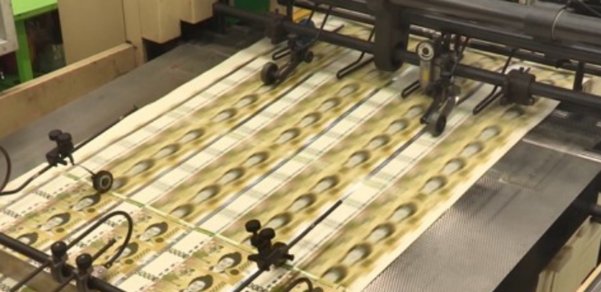Concerns of liquidity trap rise as cash deposits grow
By Jung Min-kyungPublished : Aug. 3, 2020 - 17:37

Despite the nation’s monetary and fiscal policymakers’ measures to funnel liquidity into the market to offset risks from the coronavirus, cash flows into unexpected areas, such as bank deposits, have been fueling concerns of a liquidity trap, officials and experts recently noted.
South Korea’s M2 money supply came to 3.065 quadrillion won ($2.56 trillion) in May, up 10.6 percent on-year, data from the Bank of Korea released in July showed.
The figure marked the largest amount, and the largest on-year growth rate, since the BOK started compiling the data in 1986. M2 is a measure of the money supply that takes the currency in circulation, including bank debentures and deposits with a maturity of less than two years, along with stock investments, into account.
The government has so far executed three extra budgets this year worth a combined 59 trillion won and the BOK has slashed its benchmark interest rate to a record-low of 0.5 percent, to funnel liquidity into the virus-hit market.
Though they may have both hoped the cash would flow into the “right places,” such as investment, manufacturing or spending, most of it apparently went into bank deposits. This prompted worries of a liquidity trap here, which is when monetary policy becomes ineffective as companies and consumers prefer to save rather than invest despite low interest rates.
Separate data released by the BOK showed that the amount of savings held by local banks surged 108.7 trillion won to 1,858 trillion won as of end-June, compared with the end of 2019. The figure saw the swiftest surge in a six-month period, with corporations and households having increased savings through loans in the face of coronavirus uncertainties.
The nation’s fiscal chief expressed related concerns on Facebook last week, saying that the country was “witnessing polarization of liquidity.”
“South Korea’s currency in circulation in terms of M2 has increased 10 percent on-year in 2020, surpassing the average annual growth of 6.5 percent that the country has seen in the recent decade,” Deputy Prime Minister and Finance Minister Hong Nam-ki wrote.
“To create a virtuous circle in our economy, the money must not flow into a certain asset, but into the real economy,” he added.
Besides savings, the cash has been flowing into the stock market as well, with the investors’ increased appetite for high-risk investments backed by ample liquidity. Though this may seemingly resolve liquidity trap issues, the excessive liquidity could rattle the stock market as well.
“(The economy) could be seen as in a state of ‘bubble’ with the gap between the real economy and the stock market,” Hwang Se-woon, a senior researcher at the Korea Capital Market Institute said.
“The liquidity has been flowing into the stock markets worldwide and has been prompting such gaps,” he added.
(mkjung@heraldcorp.com)
South Korea’s M2 money supply came to 3.065 quadrillion won ($2.56 trillion) in May, up 10.6 percent on-year, data from the Bank of Korea released in July showed.
The figure marked the largest amount, and the largest on-year growth rate, since the BOK started compiling the data in 1986. M2 is a measure of the money supply that takes the currency in circulation, including bank debentures and deposits with a maturity of less than two years, along with stock investments, into account.
The government has so far executed three extra budgets this year worth a combined 59 trillion won and the BOK has slashed its benchmark interest rate to a record-low of 0.5 percent, to funnel liquidity into the virus-hit market.
Though they may have both hoped the cash would flow into the “right places,” such as investment, manufacturing or spending, most of it apparently went into bank deposits. This prompted worries of a liquidity trap here, which is when monetary policy becomes ineffective as companies and consumers prefer to save rather than invest despite low interest rates.
Separate data released by the BOK showed that the amount of savings held by local banks surged 108.7 trillion won to 1,858 trillion won as of end-June, compared with the end of 2019. The figure saw the swiftest surge in a six-month period, with corporations and households having increased savings through loans in the face of coronavirus uncertainties.
The nation’s fiscal chief expressed related concerns on Facebook last week, saying that the country was “witnessing polarization of liquidity.”
“South Korea’s currency in circulation in terms of M2 has increased 10 percent on-year in 2020, surpassing the average annual growth of 6.5 percent that the country has seen in the recent decade,” Deputy Prime Minister and Finance Minister Hong Nam-ki wrote.
“To create a virtuous circle in our economy, the money must not flow into a certain asset, but into the real economy,” he added.
Besides savings, the cash has been flowing into the stock market as well, with the investors’ increased appetite for high-risk investments backed by ample liquidity. Though this may seemingly resolve liquidity trap issues, the excessive liquidity could rattle the stock market as well.
“(The economy) could be seen as in a state of ‘bubble’ with the gap between the real economy and the stock market,” Hwang Se-woon, a senior researcher at the Korea Capital Market Institute said.
“The liquidity has been flowing into the stock markets worldwide and has been prompting such gaps,” he added.
(mkjung@heraldcorp.com)











![[Today’s K-pop] BTS pop-up event to come to Seoul](http://res.heraldm.com/phpwas/restmb_idxmake.php?idx=644&simg=/content/image/2024/04/17/20240417050734_0.jpg&u=)





![[KH Explains] Hyundai's full hybrid edge to pay off amid slow transition to pure EVs](http://res.heraldm.com/phpwas/restmb_idxmake.php?idx=652&simg=/content/image/2024/04/18/20240418050645_0.jpg&u=20240419100350)

![[Today’s K-pop] Zico drops snippet of collaboration with Jennie](http://res.heraldm.com/phpwas/restmb_idxmake.php?idx=642&simg=/content/image/2024/04/18/20240418050702_0.jpg&u=)